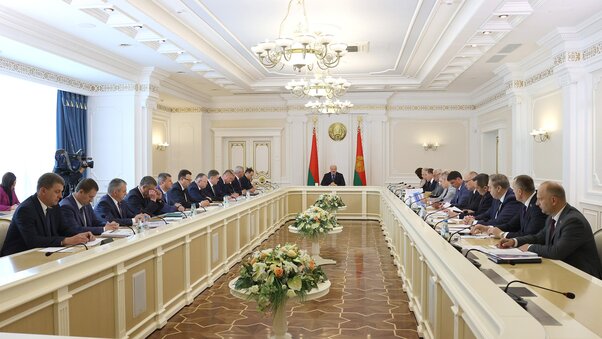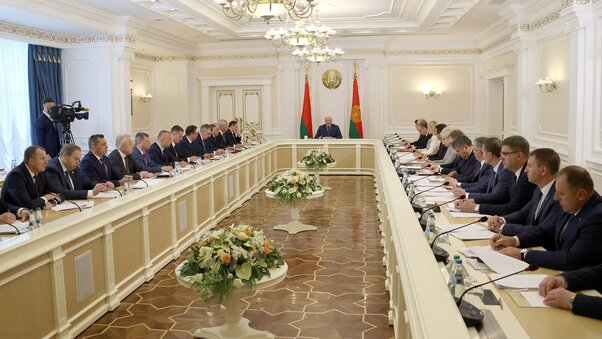Meeting to discuss Belarus’ port capacities
- 7
- 4:17
It is necessary to finally decide what exactly needs to be done to create port capacities to transship Belarusian cargo – to build a terminal, a port or to upgrade an existing port - and immediately get down to work, Belarusian President Aleksandr Lukashenko said at a meeting on 18 July.
The head of state noted that this matter was already discussed in January of this year. The focus was on the transshipment of potash fertilizers. This matter will be revisited on 18 July. In addition to that, the supply of petroleum products will be discussed. “The areas of work have been identified, all the necessary decisions have been made. It’s time to compare notes and, if necessary, to fine-tune and coordinate our further actions and plans,” the president said.
“The situation and the external environment are changing vary rapidly today. Yet, credit where credit is due, the Belarusian economy maintains momentum and keeps finding new opportunities under the sanctions,” Aleksandr Lukashenko stressed. “We must quickly respond to all challenges and ensure the delivery of export cargo to customers. It is crucial to take decisions fast,” he said.
In this regard, the head of state outlined a number of key talking points. One of them is the state of progress to create Belarus’ own seaport capacities. “We were forced to leave traditional ports and now we use all ports of the Russian Federation to transship our cargo, which is about 20 million tonnes,” the president noted.
“Are there any appreciable results in this direction?” he continued. “Which ports are used to transship potash fertilizers and oil products, what are the problems in this regard? Do we have an understanding of how much potassium we can transship through the ports of the Russian Federation on acceptable terms?” the president asked.
There are alternative options in the northwestern region of Russia. “This should be a key issue,” Aleksandr Lukashenko noted. According to him, now Belarus has two transshipment options - Murmansk and Primorsk. Each of them has its advantages and disadvantages.
“It is necessary to finally decide what exactly needs to be done to create port capacities to transship Belarusian cargo – to build a terminal, a port or to upgrade an existing port - and immediately get down to work,” the head of state emphasized. “As far as I know, we are building and upgrading capacities somewhere near Leningrad. At the same time, we have made little headway near Murmansk,” he added.
The meeting also discussed a draft ordinance on the export of certain types of goods.
In January-June of this year, Belarus transported four times more cargo through Russian sea ports than in the same period a year prior, Belarusian First Deputy Prime Minister Nikolai Snopkov said at a meeting.
"In January-June of last year we transported 1.5 million tonnes of cargo through Russian seaports. This year the volume has already amounted to almost 6 million tonnes, an increase of 400%. Almost the entire volume, or 97%, is chemical mineral fertilizers, oil and petroleum products," Nikolai Snopkov said.
He noted that the work to redirect transshipment of Belarusian potash through the seaports of the north-west and south regions of Russia began in April of last year. Today the country can transship about 1 million tones of products per month, or 12 million tonnes per year.
Nikolai Snopkov said that Belarus achieved cost-effective transshipment in the terminals of the ports of St. Petersburg. In the first half of this year, 2.7 million tonnes of potash fertilizers were shipped through these ports.
"The main ports are Bronka, the Baltic Shipbuilding Plant, Sea Fishing Port, Keystone Logistics. Bronka is the basic one, in accordance with the agreements between the Belarusian Transport Ministry and the Russian Ministry of Transport,” Nikolai Snopkov noted.


